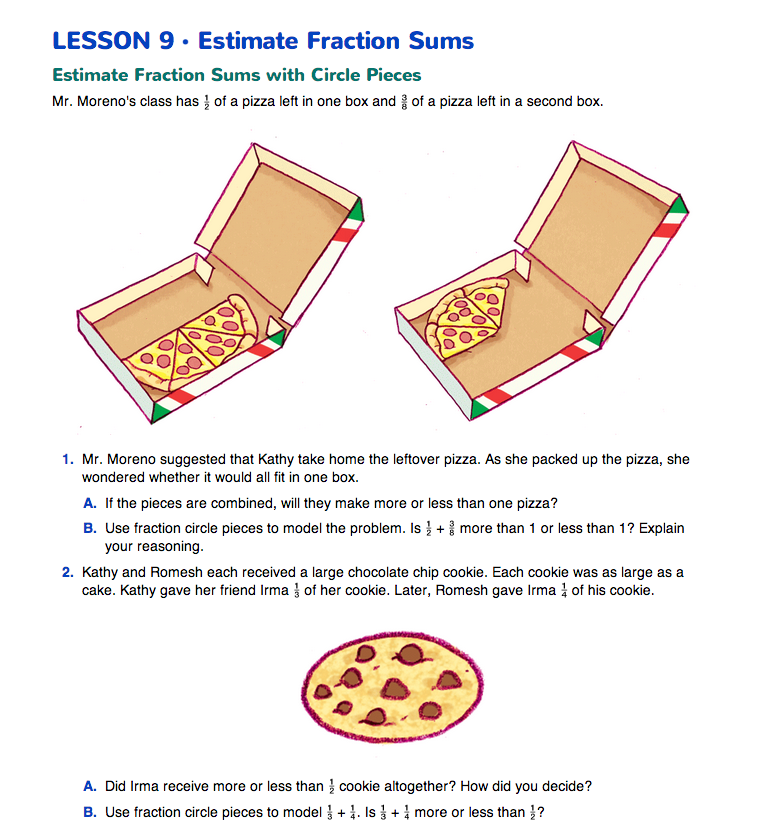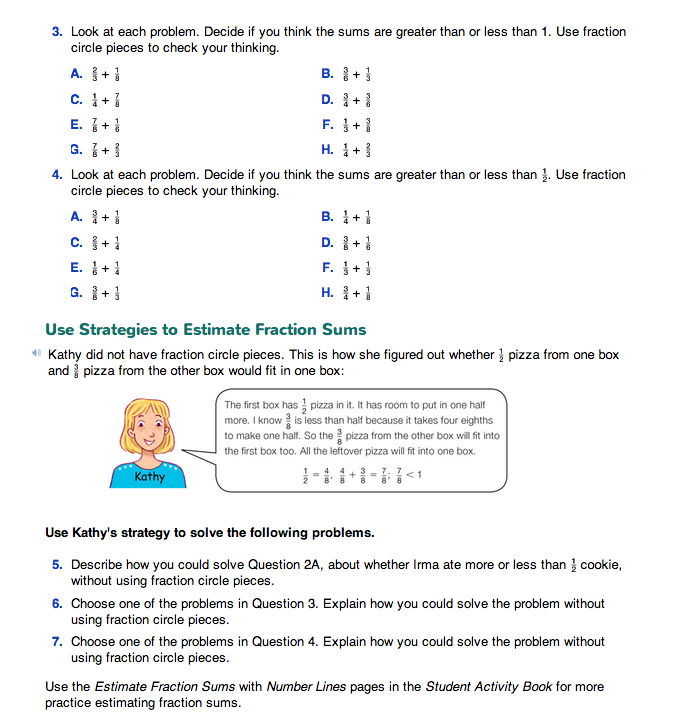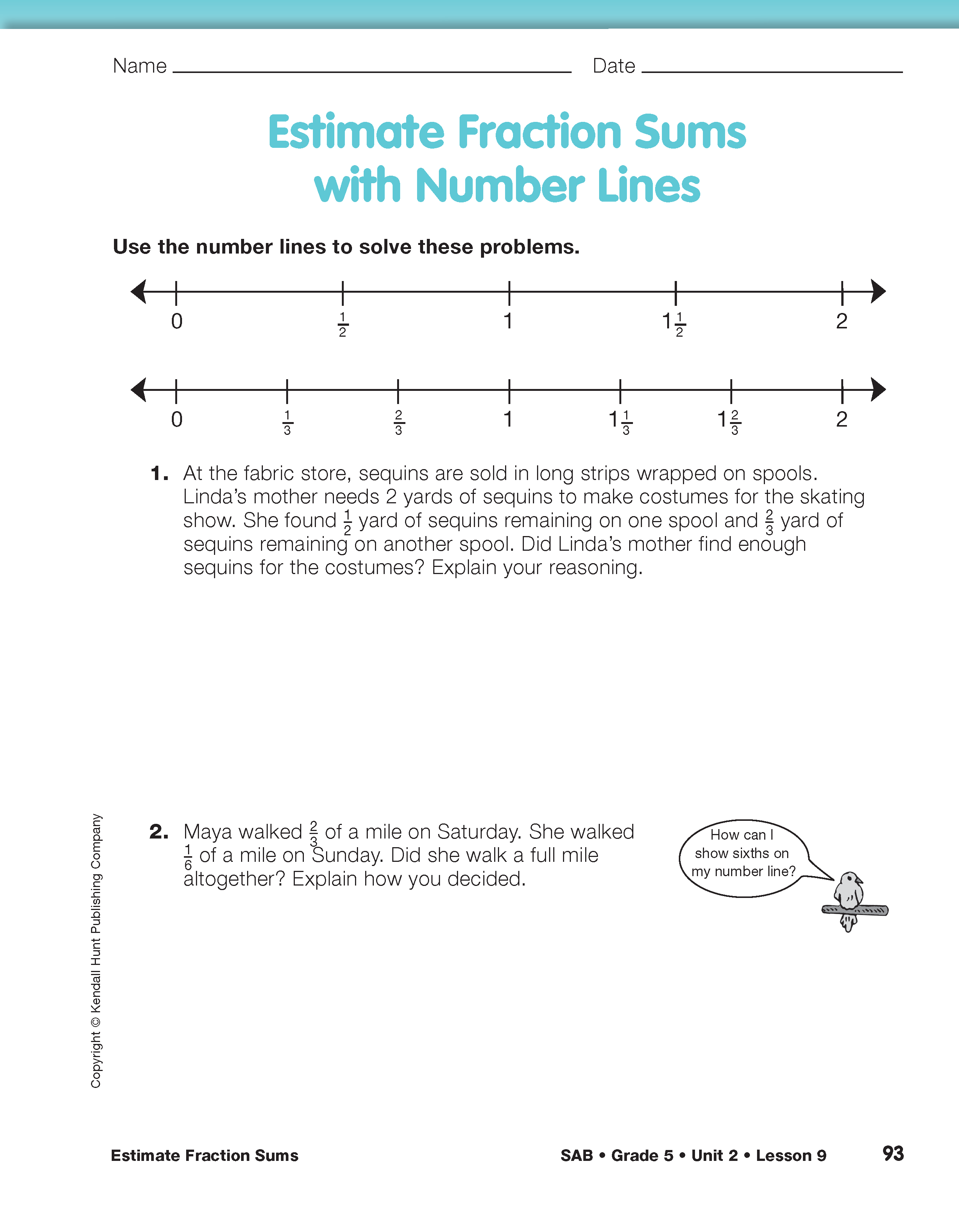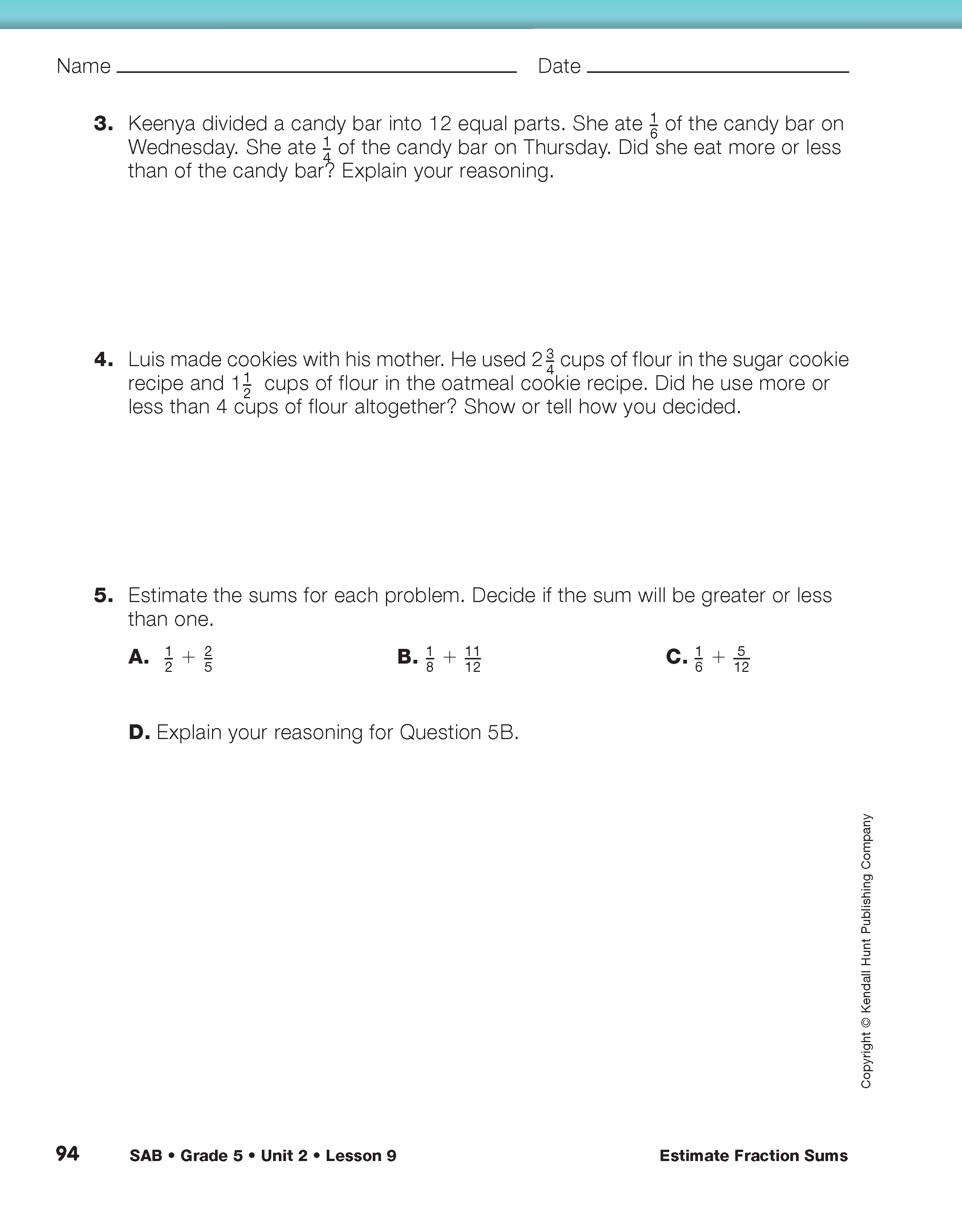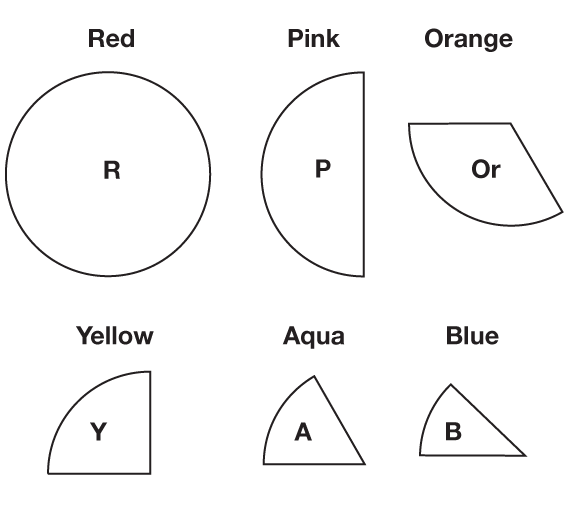Estimate Fraction Sums
Est. Class Sessions: 1–2Developing the Lesson
Estimate with Fraction Circle Pieces. Ask students to take out the red, pink, orange, yellow, aqua, and blue fraction circle pieces from their sets and to put the rest of the pieces away. See Figure 1.
Direct students to the Estimate Fraction Sums pages in the Student Guide. These pages use a class pizza party as the context for estimating the sum of fractions. In Questions 1–4, students are asked to use the benchmarks 1 and 1/2 to help them make reasonable estimates of the sum of two fractions.
After reading the brief vignette that sets the context for the problems, ask students to work with a partner to solve Questions 1–2. Encourage students to use fraction circle pieces to model each problem. Be sure each student models each problem with his or her own pieces. Partners can then compare to see that they have the same answer. The time spent with the concrete models helps students develop mental images that will help them solve similar fraction problems when models are not available.
In Questions 3–4, students should first look at each problem and estimate if they think the fraction is more or less than the benchmark. They should then check the reasonableness of their estimate by using fraction circle pieces to model each problem.
Use Strategies to Estimate. In Questions 5–7, students solve problems without using fraction circle pieces. To introduce these problems, ask students to read how Kathy thought about whether she could combine the leftover pizza from two boxes into one box. Her reasoning showed that 1/2 + 3/8 is less than 1, so the pieces would fit in one box.
Ask students to solve Questions 5–7 and then share their thinking. In Question 5, they reason without using fraction circle pieces that 1/3 cookie plus 1/4 cookie is more than 1/2 cookie. Remind them that they solved this problem in Question 2 using fraction circle pieces.
Students might describe their reasoning about the cookie problem by referring to the fraction circle pieces, even though this time they do not physically model the problem with the pieces:
1/3 of the cookie is like the orange piece. 1/4 is yellow. Two yellows make 1/2. An orange is bigger than a yellow. So an orange and a yellow make more than 1/2.
Other students might refer only to the fractions and not to the pieces:
She ate more than 1/2. 1/3 is bigger than 1/4. You only need 2/4 to make 1/2. So 1/3 plus 1/4 is more than 1/2.
After several student pairs have shared their thinking, ask:
Ask students to share their solutions for Questions 6–7.
Use these or similar prompts to guide them as they share:
Continue asking questions and sharing strategies until a variety of students have had an opportunity to share.
Use Number Lines to Estimate. Direct students to the Estimate Fraction Sums with Number Lines pages in their Student Activity Book. In Questions 1–5, students use number lines to visualize the relative size of fractions since the fractions are listed in order. Ask students to work with their partners to solve these questions. Encourage them to use the number lines as they work. Note that not all fractions in the problems are labeled on the lines. Students should reason about where the unlabeled fractions are located.
For example, as students are working on Question 2, ask:
If students have difficulty solving this problem using the number line, ask them to think about how they can divide the number line into sixths and label it from 0/6 to 12/6. See Figure 2.














